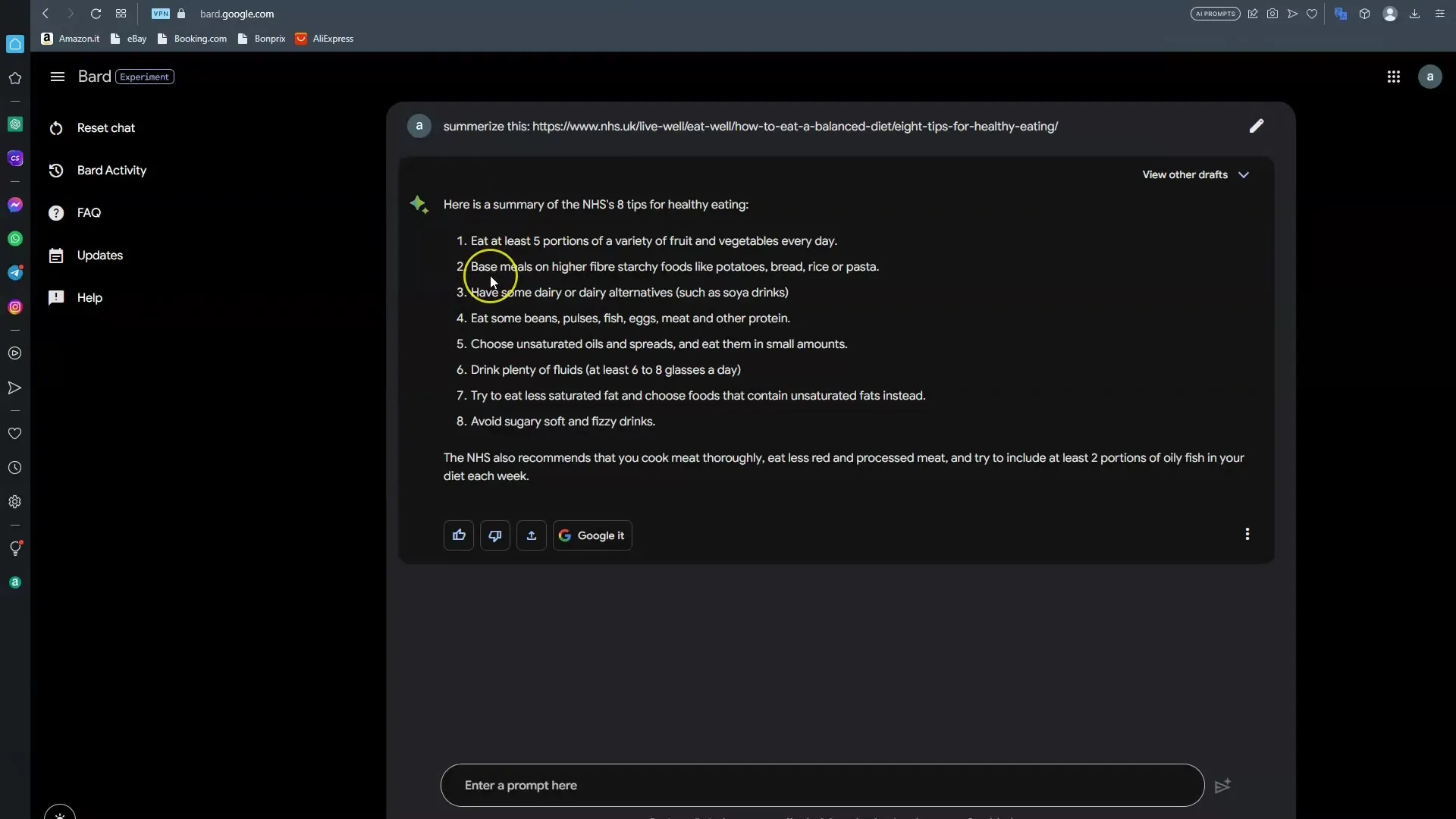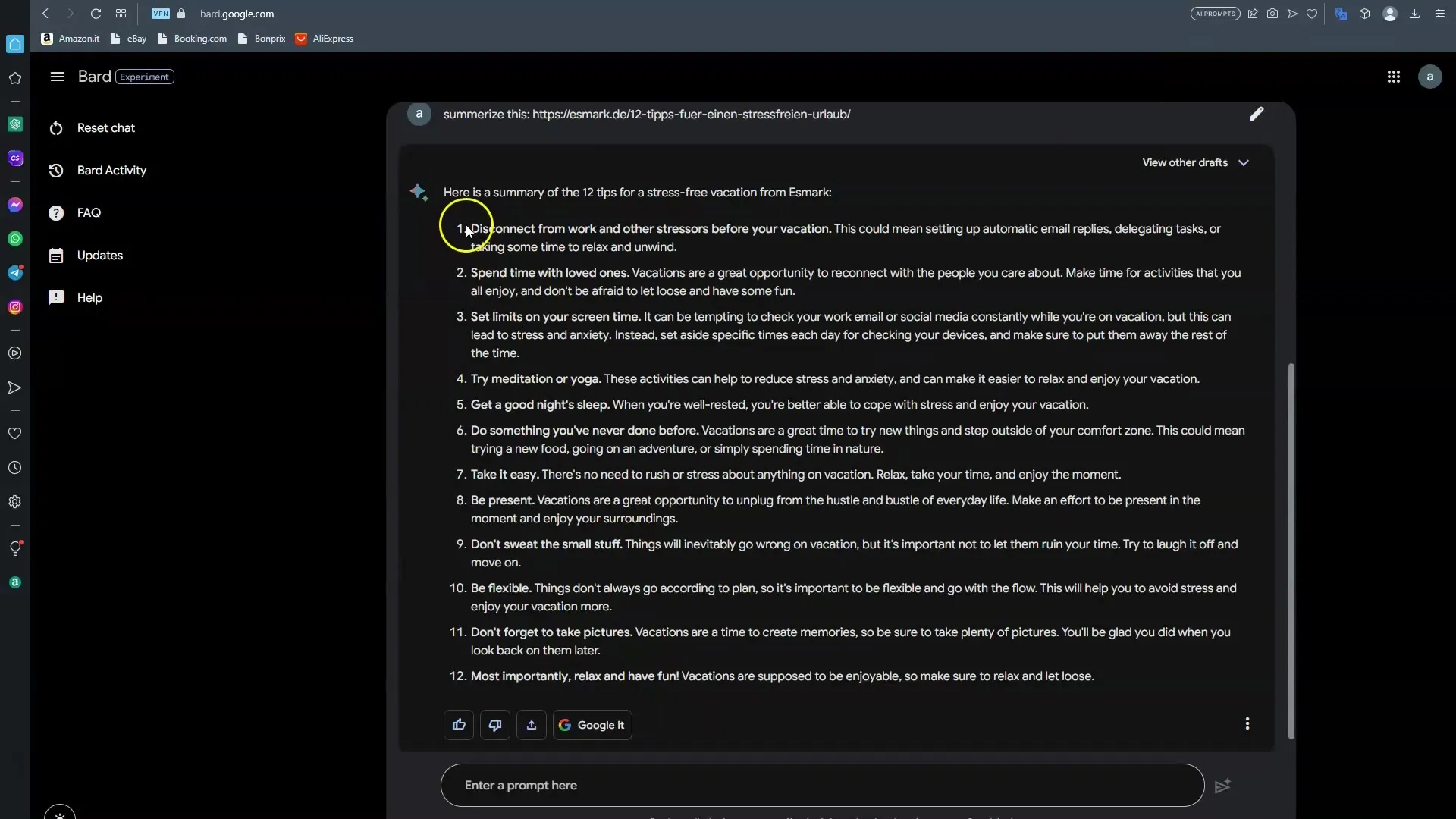In this tutorial, you will learn how to effectively use Google Bard to summarize and translate texts. Bard is an advanced AI tool that can help you condense long articles into shorter, concise formats, as well as translate content from one language to another. If you ever feel overwhelmed by lengthy texts or need a quick translation, Bard is the right tool for you.
Key Takeaways:
- Bard can efficiently summarize texts and translate them into different languages, currently primarily supporting English, Japanese, and Korean languages.
- The tool performs better than some other well-known AI alternatives, especially in summarizing URLs.
- Although Bard may not provide direct outputs in some languages like German, it recognizes the content and summarizes it in English.
Step-by-Step Guide
Step 1: Select and Copy the Article URL
To use Bard, you first need an article that you want to summarize or translate. Find a suitable text, for example, about how to eat healthier. Once you have found the article, copy the article's URL.
Step 2: Open Bard and Paste the URL
Open the Bard application. You can now paste the copied URL into the text input field to instruct Bard on what to do. Typically, pasting is done using the "Ctrl + V" combination on your keyboard.
Step 3: Request a Summary
After pasting the URL, phrase a clear command to request the summary. For example, type "summarize this" in the text field to inform Bard that you want a summary of the content.

Step 4: Receive and Review the Summary
Once you have submitted the command, Bard will generate the summary of the content. Typically, you will receive a concise overview of the main points of the article. It is important to review the summary for quality and accuracy.

Step 5: Translate into Another Language If Needed
If you want to translate content into another language, you can request this with a similar command to Bard. For example, if you have a German article and want a translation into English, you can input "summarize this" and then paste the URL of your German article to receive the summary in English.

Step 6: Analyze the Results
Once Bard's output is ready, analyze the results. Pay attention to how well the summary captures the key points of the original article. In our example about stress on vacation, you will receive a clear overview of the main tips, which Bard does very well.
Step 7: Identify Applications and Limitations
It is important to know that Bard understands some languages better than others. While Bard can recognize content in German, there are current limitations regarding output in this language. The outputs are mainly generated in English, which you should take into consideration.
Step 8: Future Developments
With the advancement of Bard and AI technologies, you can expect the capabilities to expand in the future. The hope is that Bard will soon be able to generate outputs in more languages and enhance user experience.
Summary
In this tutorial, you have learned how to use Bard to summarize longer texts and translate them into different languages. The simple application and step explanations help you make the most of Bard's functionality. Despite the current limitations in some languages, Bard is a very useful tool for quick, concise summaries and translations.
Frequently Asked Questions
How can I use Bard to summarize texts?You can use Bard by copying the URL of an article and entering the command "summarize this".
Which languages does Bard currently support?Currently, Bard mainly supports English, Japanese, and Korean.
How well does Bard work compared to other tools?Bard has proven to be more efficient, especially in summarizing URLs, compared to other well-known tools.
Can I translate texts into other languages?Yes, you can summarize texts from one language to another, but the output is often in English.
Are the outputs from Bard always in the desired language?Currently, Bard can recognize content in other languages but primarily outputs in English.


